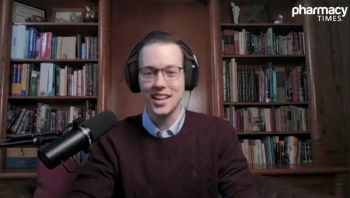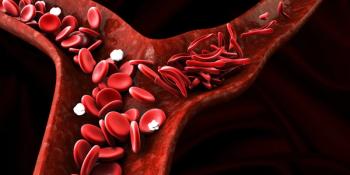
- Immunization Guide for Pharmacists
- Volume 1
- Issue 4
Tackling Vaccination Hesitancy Unrelated to Medical Exemption
Ironically, it is often during times when vaccine-preventable disease rates are lowest that public opposition to them is most pervasive, and this certainly seems to be the case with contemporary antivaccination movements in the United States.
Vaccine hesitancy and resistance to mandatory vaccination are as old as vaccines themselves.1 Throughout the nearly 200-year history of modern vaccines, there have been groups who, at times through vocal or violent protest, have denied the value of vaccines or exaggerated their risks.1 Ironically, it is often during times when vaccine-preventable disease rates are lowest that public opposition to them is most pervasive. This certainly seems to be the case with contemporary antivaccination movements in the United States. Most parents of today’s young children have never lived in a time or place where infectious diseases such as measles and polio sickened and killed large numbers of people.
Those of us who study public health or work in health care understand that this is because vaccines are arguably the most effective public health intervention in human history. However, it is not irrational for members of the public with varying levels of health literacy to question the necessity of vaccines that prevent diseases to which they have never felt susceptible. In the setting of hyperbolic and widespread discussion in social media venues of purported risks to health and personal liberty, it should be no surprise that some patients and parents wonder whether they should avoid seasonal influenza (flu) shots or even entire schedules of pediatric vaccines.
Very little published research exists to specifically guide pharmacists in addressing vaccine hesitancy. However, as frontline health care providers and a major source of vaccinations in many states, pharmacists have an opportunity to communicate with patients and parents regarding the safety, efficacy, and public health value of vaccines. Several strategies pharmacists can use to reduce the burden of vaccine hesitancy are discussed below.
BE PREPARED TO RESPOND TO COMMON MISCONCEPTIONS
Multitudes of resources are freely available to all pharmacists through the CDC and other organizations that provide continually updated information about vaccines. In addition to clinical recommendations, educational materials for patients and information to help guide discussion of vaccines are available, see below:
Being well versed in the clinical evidence related to vaccine recommendations is vital in addressing vaccine hesitancy on an individual patient level, and all pharmacists should be prepared to confront a number of very common myths, misconceptions, and misinformation campaigns (table2-9).
WORK TO IMPROVE VACCINATION RATES OVERALL
Perhaps one of the most straightforward ways to minimize the impact of vaccine avoidance is to work to improve vaccination rates by other means. This includes ensuring that patients and their parents have access to vaccines, and are aware of recommended vaccines, and know where they can go to get vaccinated. Pharmacy-based vaccine services improve access to vaccines, specifically flu, and can serve an important role for working families who may have difficulty making appointments during regular business hours.10,11
Additionally, pharmacists and other health care providers are encouraged to be mindful of their own vaccination status and receive all recommended vaccines. Not only does every vaccine help improve community-wide coverage, but we should not ask patients to do anything we are not willing to do ourselves.
Keri Hurley-Kim, PharmD, MPH, is an associate professor in the Department of Pharmacy Practice at West Coast University School of Pharmacy in Los Angeles, California.
REFERENCES
- Wolfe RM, Sharp LK. Anti-vaccinationists past and present. BMJ. 2002;325(7361):430-432. doi: 10.1136/bmj.325.7361.430.
- Jain A, Marshall J, Buikema A, Bancroft T, Kelly JP, Newschaffer CJ. Autism occurrence by MMR vaccine status among US children with older siblings with and without autism. JAMA. 2015;313(15):1534-1540. doi: 10.1001/ jama.2015.3077.
- Hviid A, Hansen JV, Frisch M, Melbye M. Measles, mumps, rubella vaccination and autism: a nationwide cohort study [published online March 5, 2019]. Ann Intern Med. doi: 10.7326/M18-2101.
- Uno Y, Uchiyama T, Kurosawa M, Aleksic B, Ozaki N. Early exposure to the combined measles-mumps-rubella vaccine and thimerosal-containing vaccines and risk of autism spectrum disorder. Vaccine. 2015;33(21):2511-2516. doi: 10.1016/j.vaccine.2014.12.036.
- Taylor LE, Swerdfeger AL, Eslick GD. Vaccines are not associated with autism: an evidence-based meta-analysis of case-control and cohort studies. Vaccine. 2014;32(29):3623-3629. doi: 10.1016/j.vaccine.2014.04.085.
- Rosenberg RE, Law JK, Yenokyan G, McGready J, Kaufmann WE, Law PA. Characteristics and concordance of autism spectrum disorders among 277 twin pairs. Arch Pediatr Adolesc Med. 2009;163(10):907-914. doi: 10.1001/archpediatrics.2009.98.
- Bever L. Autism Speaks, leading autism advocate, urges vaccination. The Washington Post website. washingtonpost.com/news/morning-mix/wp/2015/02/09/leading-autism-advocate-urges-vaccination/?noredirect=on&utm_term=.0dc2e6d807dd. Published February 9, 2015. Accessed June 24, 2019.
- FluMist Quadrivalent [prescribing information]. Gaithersburg, MD: MedImmune, LLC; 2019. fda.gov/media/83072/download. Accessed June 24, 2019.
- Stratton K, Wilson CB, McCormick MC, eds; Institute of Medicine. Immunization Safety Review: Multiple Immunizations and Immune Dysfunction. Washington, DC: The National Academies Press; 2002. doi: 10.17226/10306. nap.edu/read/10306/chapter/1. Accessed June 30, 2019.
- Gai Y, Feng L. Relationship between pharmacist density and adult influenza vaccination after controlling for individual and neighborhood effects. J Am Pharm Assoc (2003). 2017;57(4):474-482.e12. doi: 10.1016/j.japh.2017.03.011.
- Goad JA, Taitel MS, Fernsterheim LE, Cannon AE. Vaccinations administered during off-clinic hours at a national community pharmacy: implications for increasing patient access and convenience. Ann Fam Med. 2013;11(5):429-436. doi: 10.1370/afm.1542.
Articles in this issue
over 6 years ago
Empowering Patients to Know Their Immunization Historyover 6 years ago
Immunizing Patients Is Worth Pharmacists' and Technicians' Timeover 6 years ago
Healthy People 2020: Immunization Goalsover 6 years ago
Addressing Immunizations in Pregnant and Lactating Womenover 6 years ago
Hepatitis B Virus: Who Is at Risk, and What Can We Do?over 6 years ago
New Vaccines in the Pipeline 2019Newsletter
Stay informed on drug updates, treatment guidelines, and pharmacy practice trends—subscribe to Pharmacy Times for weekly clinical insights.
















































































































































































































